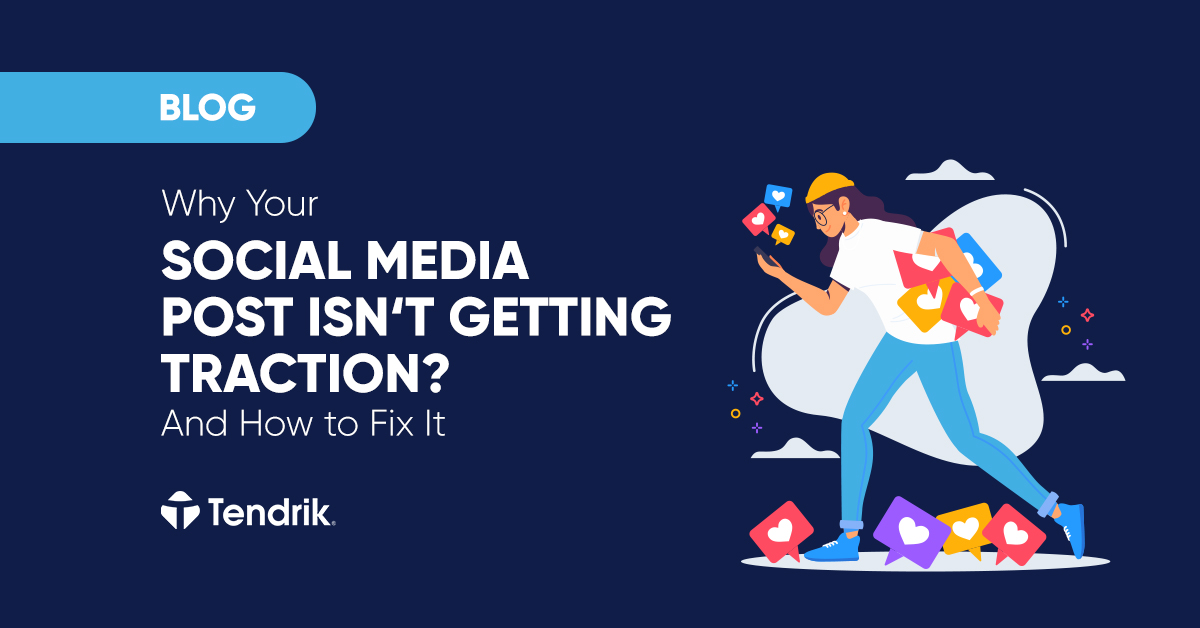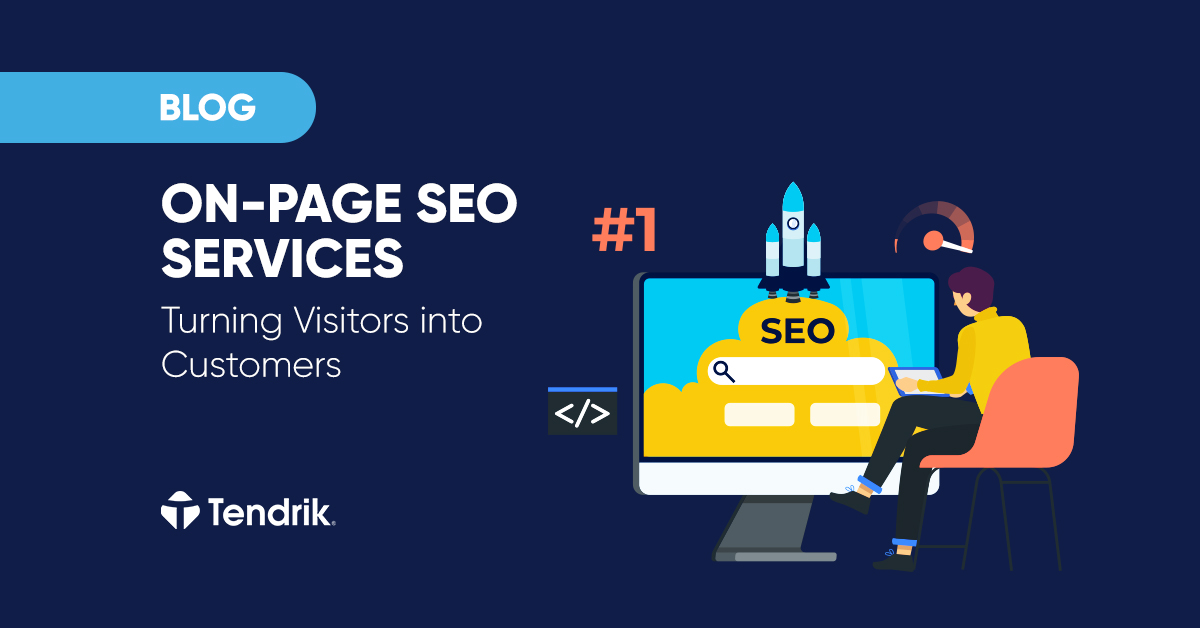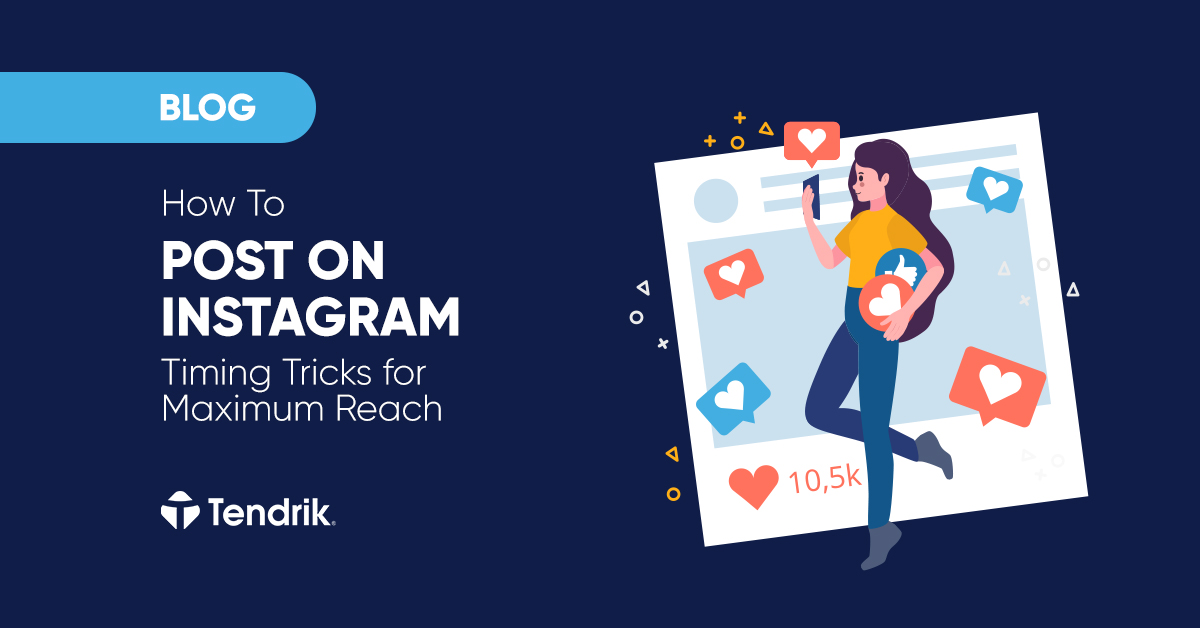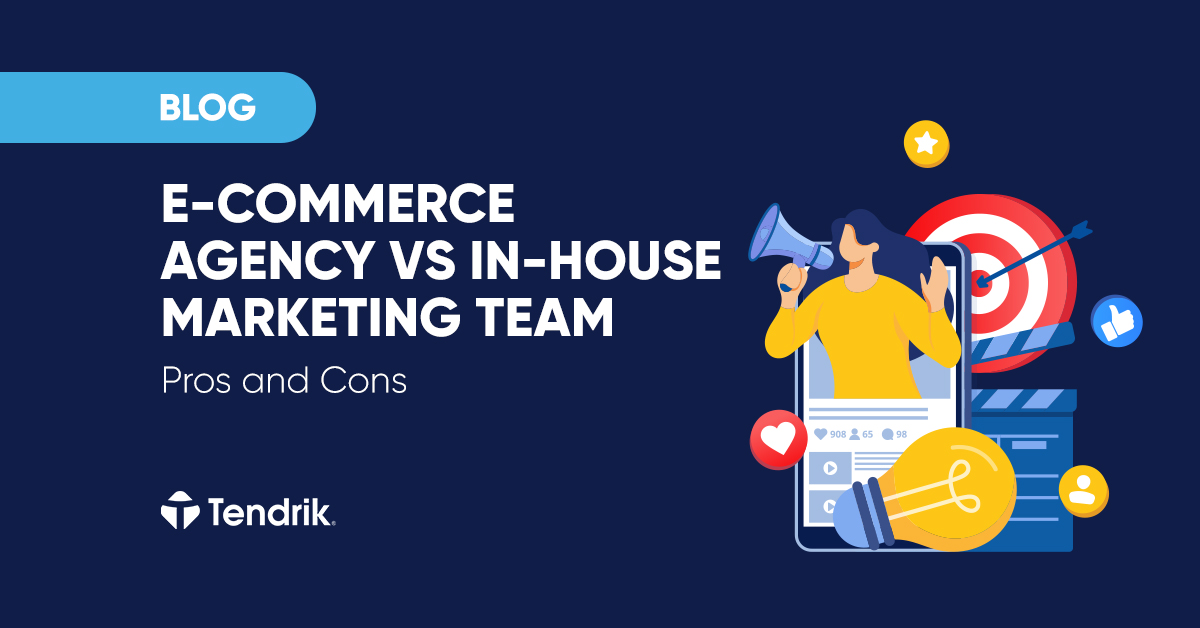Social media content is everywhere. Whether you’re scrolling through Facebook, Instagram, LinkedIn, or Twitter, you’ll see countless brands pushing out post after post – but not all of them get the likes, shares, or saves they hope for.
So, why is your social media post not working as expected?
This blog breaks down the most common reasons your social media content might be falling flat and shows you how to fix it. With a focus on different types of social media, smart post ideas, and proven strategies to help your content perform better, this is the guide you didn’t know you needed.
What Makes a Post on Social Media Fail?
Let’s face it – every post on social media should be there for a reason – to inform, engage, entertain, or convert. But when your post ends up with zero interaction, it’s time to troubleshoot.
Many brands treat social as a dumping ground for sales messages. But without a defined strategy, even the flashiest Instagram post won’t go far. You need to understand the type of content your audience cares about and how the platform’s algorithm prioritises it.
Some of the most common issues include:
- Lack of relevant content;
- Ignoring what your social media users actually want;
- Using the wrong social media post types for the wrong platform;
- No clear call-to-action (CTA).
Your goal should be to create content that resonates, encourages interaction, and provides value, not just visibility.
How to Choose the Right Social Media Platform?
Not every piece of content performs equally across platforms – what works brilliantly on TikTok may flop on LinkedIn. Knowing how each of the popular social media channels functions is critical to shaping a smart, results-driven content strategy.
- Instagram – strong aesthetics and consistent branding are essential here, making it ideal for showcasing products, lifestyle moments, or visual storytelling. It’s one of the best channels for influencer marketing. Instagram loves high-quality visuals, carousel posts, and Instagram Stories. Visually-driven brands can use this to showcase products, brand aesthetics, and lifestyle content that boosts engagement.
- Facebook – while its reach has shifted, facebook page remains effective for nurturing existing followers through events, group discussions, and evergreen posts that support long-term content planning. Facebook still does well with community-oriented social content and video content.
- LinkedIn – as a key space for B2B social media, it’s ideal for sharing case studies, lessons learned, and behind-the-scenes leadership insights that build long-term authority and trust. LinkedIn posts thrive when they’re educational or insightful — especially with thought-leadership or storytelling formats.
- TikTok – it’s a goldmine for discovery, especially for brands looking to reach new audiences quickly by riding the wave of fast-moving cultural moments or inspire through highly shareable content. TikTok posts excel when they leverage short-form video and follow trending topics.
- Twitter/X – use it for timely news, witty takes, and engaging in trending conversations – it’s great for adding agility to your strategy. Twitter/X focuses on real-time updates and quick engagement. It’s best used for joining live conversations, sharing updates, or amplifying your reach with timely replies and hashtags.
Different types of social media require different approaches. A one-size-fits-all strategy is a guaranteed way to waste your efforts – tailor each type of post to match both the platform and your audience expectations to get the best results.
How Often Should You Post on Social Media?
Here’s a common mistake: brands either post too little and disappear from their audience’s radar, or post too much and overwhelm their followers.
The frequency at which you post on social media depends on two things – your audience’s expectations and the nature of the social platform. While Instagram often rewards daily posts, especially when combined with Stories or Reels, LinkedIn is more effective with 2–3 high-value posts per week. Both TikTok and Twitter/X thrive on volume and support multiple updates every day.
What makes this tricky is that different social networks have different content rhythms, and audiences respond differently. That’s why understanding the best time to post is just as important as how often you post. For example, Instagram users are most active in the evenings and on weekends, while LinkedIn audiences tend to engage more during business hours on weekdays.
There’s no one-size-fits-all rule, but following a structured content calendar can help you avoid the common pitfall of inconsistency. It ensures that you’re not just posting frequently – you’re posting with purpose. This approach supports an effective social media strategy that balances visibility with value.
Using scheduling tools allows you to plan ahead, maintain a regular cadence, and free up your team to focus on creativity instead of chaos. Tools like Buffer, Hootsuite, or Later also offer insights into the best time to post based on your specific audience data.
In short, quality and timing matter just as much as frequency. Consistency, relevance, and knowing when your audience is online are key pillars of effective social media planning, no matter which platform you’re on.
Are You Ignoring Social Media Trends?

Trends are at the heart of every engaging social media strategy. Whether it’s a new sound on TikTok, a viral meme format, or a sudden social media holiday, timely content wins.
Use trending topics to your advantage. While evergreen content is great for long-term visibility, posts that tap into what’s happening now get picked up faster by social media algorithms.
But don’t chase trends blindly. Make sure they align with your brand’s values and messaging. Content that includes current references must still deliver on your brand promise.
10 Social Media Post Ideas That Work
If you’re stuck for inspiration, these social media ideas will breathe new life into your feed and help you deliver a strong mix of personality, promotion, and purpose. These aren’t just random prompts — they’re social media content ideas proven to perform across platforms.
1. Behind-the-scenes content from your business
People love to see the human side of brands. Sharing day-to-day moments from your office, production process, or creative flow creates authenticity and helps your audience connect with your brand. Posts that include raw, unfiltered visuals are ideal for Instagram Stories or casual Reels.
2. Educational tips or quick how-tos
Position yourself as a go-to resource by sharing helpful knowledge your audience can apply right away. Whether it’s a short tutorial or a quick hack, this kind of long-term content builds trust and keeps users coming back for more. These work well as a text post on LinkedIn or a short-form video on TikTok.
3. Customer testimonials and user-generated content
Showcase your happy customers! Not only does this provide social proof, but it also reduces the amount of original social media content you need to produce. Reposting user-tagged content strengthens the community and encourages others to engage with your posts.
4. Product demos or teasers
Give your audience a closer look at what you offer. Whether it’s a behind-the-scenes walkthrough or a sneak peek of an upcoming launch, this visual content builds anticipation and drives conversions. Make sure these posts include a CTA to learn more or pre-order.
5. Ask a question or create a poll
Engagement gold. These posts invite interaction and provide insight into your audience’s opinions or habits. Use them in Stories, Tweets, or LinkedIn posts to create two-way dialogue. Remember: sometimes, you need to post less promotional and more conversational content.
6. Day-in-the-life or employee spotlights
Humanising your brand through team-focused content helps build trust and relatability. Highlight your people, their stories, and their wins. This kind of content you share adds emotional depth and fosters community.
7. Industry hot takes or news
Position your brand as a thought leader by sharing your perspective on current events, innovations, or controversial takes in your niche. These text post formats are great for LinkedIn and Twitter, and they’re often highly shareable due to their bold or insightful nature.
8. Before-and-after results
Nothing proves value like a transformation. Whether it’s a design project, client success story, or personal journey, this format speaks volumes. Use a compelling visual content layout like a carousel or side-by-side image to maximise impact.
9. Quotes or motivational posts
These are simple yet powerful ways to stay top-of-mind. A well-designed quote can spark emotion or align with your audience’s values. Use tools like Canva to make them brand-consistent and visually appealing — they’re perfect filler for days when you need to post but don’t have time to create something complex.
10. Share a blog or resource with your social media community
Repurpose your existing long-form content by summarising blog posts or linking to helpful guides, webinars, or downloads. This reinforces your expertise while driving traffic back to your website. Always pair with a strong hook and a relevant visual or thumbnail to stop the scroll.
These social media post ideas are perfect for diversifying your content mix. They allow you to balance brand storytelling, education, and promotion while ensuring that every type of post is working toward a bigger content marketing strategy.
The Role of User-Generated Content in Engagement
User-generated content (UGC) is pure gold. It’s real, relatable, and incredibly trustworthy. People trust people more than brands, and this type of content shows how your offering performs in the real world.
Encourage your social media users to tag your brand, participate in challenges, or submit reviews. Not only does this build trust, but it also fills gaps in your posts calendar with authentic, engaging content. UGC helps you stay active across all your social media accounts without the need to create everything yourself from scratch.
This type of content also strengthens your social media presence by amplifying the voices of real customers. It shows that your brand values community input and creates a feedback loop of loyalty and engagement. When people see others engaging with your product or service, that’s а social proof – and it’s incredibly powerful.
Short-Form Video: Why It’s Crucial in 2025?

If you’re not using short-form video, you’re missing one of the most effective formats on any social platform.
Thanks to TikTok, Instagram / Facebook Reels, and even YouTube Shorts, bite-sized videos are dominating every feed. Whether it’s tutorials, behind-the-scenes, or product teasers, video content allows you to tell stories in seconds — and tell them well.
Why it works:
- It’s quick to consume.
- It’s shareable.
- It plays well with mobile devices.
- It performs well in every social media feed.
Creating short-form videos doesn’t require a film crew – just a phone, a good idea, and the willingness to test. You can reuse clips across different social media accounts to maximise value. To stay consistent, schedule your posts in advance and keep an eye on trends that align with your brand voice.
Incorporating short videos regularly into your posting strategy can significantly boost your social media presence. It gives your audience a reason to stop scrolling and start engaging.
How to Use a Social Media Content Calendar Properly?
A social media calendar isn’t just for organisation – it’s a strategy tool. It helps you balance content types, plan for social media holidays, and stay ahead of trending topics.
A good calendar avoids content repetition and ensures you’re not scrambling for content ideas last minute. It also helps you visualise how different pieces of content support your broader goals, from promotions to awareness campaigns.
Use a free social media calendar template or software that lets you collaborate with your team. Consider all different post types and how they support your wider social media marketing strategy. Don’t forget to mix in external content like curated articles or industry news to keep things fresh and provide added value to your followers.
Knowing how often you should post on each platform is key, and a calendar makes it easier to maintain that rhythm. When you schedule your posts ahead of time, you reduce last-minute stress and ensure a consistent presence that builds momentum over the long term.
Creating Social Posts That Connect
Social media isn’t just about showing up — it’s about showing up with intention, clarity, and value. Every post you publish contributes to social media’s fast-moving stream of content, so standing out means you need to be more thoughtful than ever.
To make your social efforts truly count, you must focus on strategy over spontaneity. That means making your posts serve a specific purpose, whether that’s engagement, education, or conversion. Use a blend of proven formats and creative social media content ideas to consistently deliver the value your audience seeks — and don’t be afraid to share it more than once if it’s working.
Key Takeaways – TL;DR
- Understand each platform before creating content.
- Match your type of content to your audience.
- Use timely trends and short-form video to stay relevant.
- Leverage user-generated content for authenticity.
- Keep a consistent, well-planned content calendar.
- Vary your types of posts to keep content fresh.
- Never post without a purpose — every post should do something.
- Use content that includes strong hooks, value, and CTAs.
- Don’t forget to use social media holidays and trendy topics to ride the wave of virality.
Let’s be honest — navigating social media can feel overwhelming at times. But the truth is, social media is a great opportunity to connect with your audience, share your brand’s voice, and build lasting trust. With the right mix of strategy, consistency, and thoughtful content creation, your content can do more than just fill a feed — it can drive real results. And if you need expert guidance, Tendrik is here to help you turn ideas into impact. Contact us and let’s make your social media networks better together!







